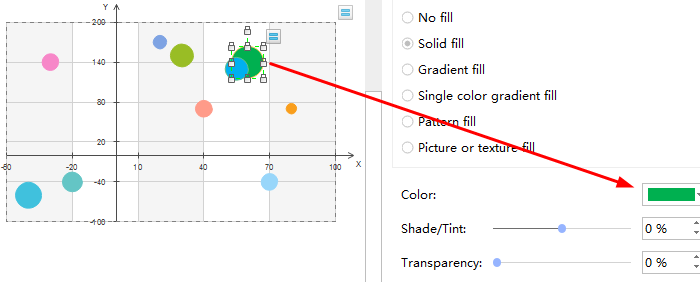
- Scatter chart creator how to#
- Scatter chart creator software#
Scatter chart creator software#
Mapping out the workflow of a software development lifecycle.Documenting and analyzing the steps involved in a customer order fulfillment process.To standardize processes by leading everyone to follow the same steps.To analyze processes and discover areas of issues, inefficiencies, blockers, etc.To build a common understanding of a process.Here’s a roundup of all the key flowchart symbols. In addition to showing the process as a whole, a flowchart also highlights the relationship between steps and the process boundaries (start and end).įlowcharts use a standard set of symbols, and it’s important to standardize the use of these symbols so anyone can understand and use them easily. This tool is used to visualize the sequence of steps in a process, event, workflow, system, etc. Flowchartįlowcharts are perhaps the most popular out of the 7 quality tools.

They help teams and individuals analyze and interpret the data they gather and derive maximum information from it. The 7 quality tools can be applied across any industry.
Continuous improvement: By using these tools, teams can establish a culture of continuous improvement, as they provide a framework for ongoing monitoring, analysis, and refinement of processes.ħ Basic Quality Tools Explained with Templates. Problem identification and prioritization: The tools help identify and prioritize problems or improvement opportunities, enabling teams to allocate resources efficiently and address critical issues first. Improved communication and collaboration: Visual representations and structured tools facilitate effective communication and collaboration among team members, leading to shared understanding and alignment. Data-driven decision making: The tools enable data collection, analysis, and visualization, empowering teams to make informed decisions based on evidence. Structured approach: They provide a systematic approach to problem-solving and process improvement, ensuring that efforts are well-organized and focused. The use of these tools helps people involved easily generate new ideas, solve problems, and do proper planning. Quality tools are used to collect data, analyze data, identify root causes, and measure results in problem-solving and process improvement. How Can Teams and Organizations Use the 7 Basic Quality Tools? 7 basic tools of quality were thus incorporated company-wide. During this time, companies were focused on training their employees in statistical quality control realized that the complexity of the subject could intimidate most of the workers hence they opted for simpler methods that are easy to learn and use. The 7 quality tools were first emphasized by Kaoru Ishikawa a professor of engineering at the University of Tokyo, who is also known as the father of “Quality Circles” for the role he played in launching Japan’s quality movement in the 1960s. Kaoru Ishikawa played the leading role in the development and advocacy of using the 7 quality tools in organizations for problem-solving and process improvement. They are called basic quality tools because they can be easily learned by anyone even without any formal training in statistics. The 7 basic tools of quality, sometimes also referred to as 7 QC tools – represent a fixed set of graphical tools used for troubleshooting issues that are related to quality. 
7 Basic Quality Tools Explained with Templates.How Can Teams and Organizations Use the 7 Basic Quality Tools?.
Scatter chart creator how to#
This post will describe the 7 basic quality tools, how to use them and give you access to templates that you can use right away. They were soon adopted by most companies and became the foundation of Japan’s astonishing industrial resurgence after World War 2. He introduced the 7 basic tools of quality. Kaoru Ishikawa, a member of the Japanese Union of Scientists and Engineers (JUSE), took it to his hands to make quality control easier for everyone – even those with little knowledge of statistics – to understand. But soon they realized that the complexity of the subject itself could intimidate most of the workers so they wanted more basic tools.ĭr. Companies were focused on training their employees in statistical quality control. Postwar Japan underwent a major quality revolution. One of the many reasons for this is its excellent quality management. Japan is known worldwide for its quality products and services.






 0 kommentar(er)
0 kommentar(er)
